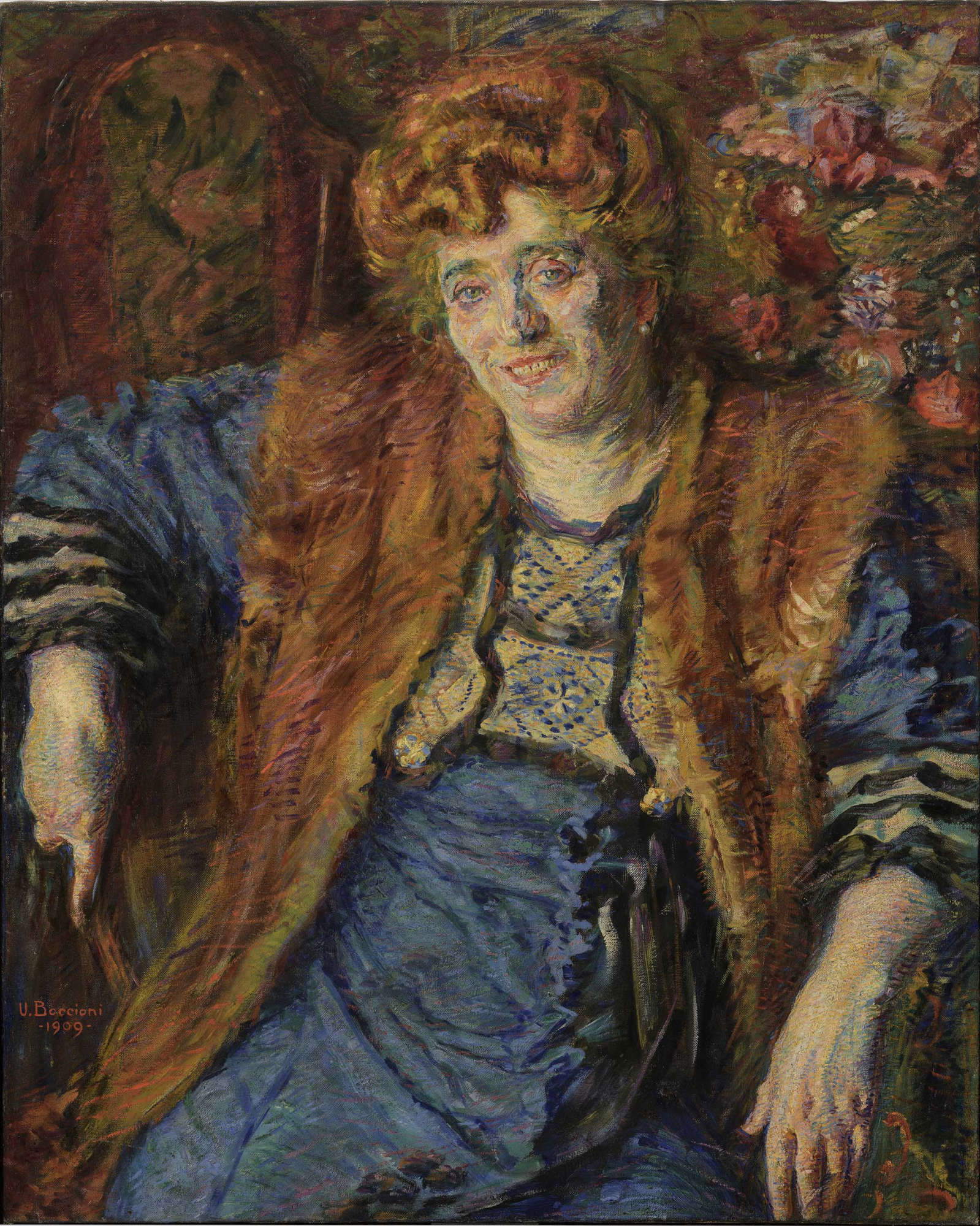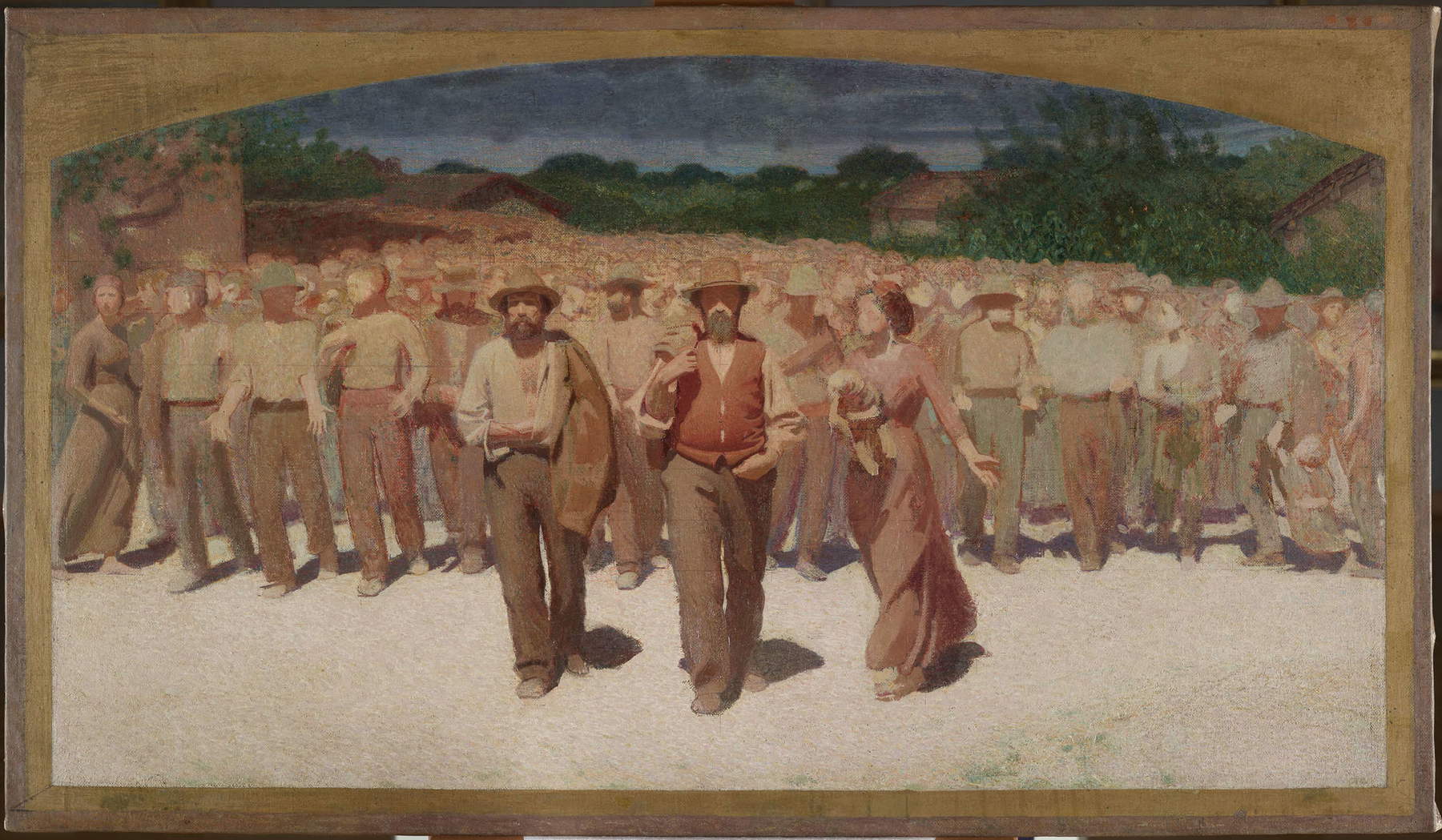The Pinacoteca Divisionismo in Tortona confirms itself as a center of excellence for the study and appreciation of Italian art at the turn of the 19th and 20th centuries, announcing two new, significant acquisitions that add to its already prestigious collection. These are Mrs. Maffi. Una maestra di scena by Umberto Boccioni (Reggio Calabria, 1882 - Verona, 1916), made in 1909, and Il cammino dei Lavoratori by Giuseppe Pellizza da Volpedo (Volpedo, 1868 - 1907), datable between 1898 and 1899. Both works represent decisive moments in the careers of the two authors, as well as fundamental steps in the history of Italian art: the former in the context of the transition from Divisionism to Futurism, the latter as a preparatory study for the famous The Fourth Estate.
The most recent novelty concerns the entry into the collection of Umberto Boccioni’s work, La Signora Maffi. Una maestra di scena, a painting that marks a phase of great transition for the artist. Created in 1909, the work testifies to Boccioni’s adherence to Divisionist language, but also to the beginning of an expressionist and dynamic tension that preludes Futurism. The work is emblematic of a period in which the Milanese artist intensely explored new formal tools, exploiting the potential of color and light in a constructive and emotional function. The subject, Adalgisa Maffi, a stage master, is depicted with a plastic and luministic force that impresses with its modernity. The figure emerges from an interior only suggested, almost abstract, constructed by a play of brushstrokes that results in an effect of expressive power and stage presence. Boccioni enhances the three-dimensionality of the human figure, making it the fulcrum of a close and intense composition, reminiscent of Northern Expressionism and bringing in the luministic lesson of Gaetano Previati.


The work’s importance is also historical: Signora Maffi was exhibited as early as 1910 at the solo exhibition Boccioni held at Ca’ Pesaro in Venice, an event that marked a turning point in the public and critical reception of his work. With this acquisition, the Pinacoteca Divisionismo in Tortona is enriched with a very relevant piece for understanding the transformation of Boccioni’s aesthetics and gives visitors a further chance to grasp the transition from the analytical naturalism of Divisionism to the suggestions of movement and modernity that will give birth to the Futurist revolution.
The second work that completes this renewed exhibition proposal is Giuseppe Pellizza da Volpedo’s The Way of the Workers, acquired and already on display in Tortona since last November. Created between 1898 and 1899, the work represents a preparatory study for The Fourth Estate, the masterpiece that would be completed a few years later and is now one of the most iconic images of 20th-century Italian art. But Il cammino dei Lavoratori is not just an intermediate step: it is an autonomous painting, endowed with its own expressive force and artistic worth, vibrantly restoring the social and existential tensions of the time.
The scene depicted is that of a compact group of workers advancing decisively, in a choral movement that symbolizes collective consciousness-raising. The figures intertwine in an unstoppable flow, with gestures and looks expressing determination and hope. The entire composition is pervaded by a warm ochre that gives unity and intensity to the group, and at the same time directs the scene toward a light that takes on symbolic value. Despite its function as a study, The Way of the Workers manages to convey Pellizza’s ethical and poetic vision with immediacy, confirming itself as a work of high value and strong visual impact.
The inclusion of these two works in the permanent collection of the Pinacoteca Divisionismo marks a significant moment in the history of the Tortona museum. The facility, located in the heart of the city, now houses more than 145 works by major exponents of Italian Divisionism, including such names as Angelo Morbelli, Emilio Longoni, Plinio Nomellini, Gaetano Previati, Giovanni Segantini and, of course, Giuseppe Pellizza da Volpedo. These acquisitions further strengthen the Pinacoteca’s role as a national and international point of reference for the study of Divisionism. The museum’s focus is not only on conservation, but also on the active enhancement of the works through a constant dialogue with scholars, collectors, cultural organizations and public institutions.
The official opening of the new exhibit, which will include Boccioni’s La Signora Maffi alongside Pellizza’s The Way of the Workers, is scheduled for June.
 |
| Two masterpieces by Boccioni and Pellizza enrich the Pinacoteca Divisionismo in Tortona |
Warning: the translation into English of the original Italian article was created using automatic tools. We undertake to review all articles, but we do not guarantee the total absence of inaccuracies in the translation due to the program. You can find the original by clicking on the ITA button. If you find any mistake,please contact us.